Last updated on January 19th, 2018 at 12:58 pm
Ethereum (ETH) is a popular choice for graphics card (GPU) miners. In 2018, Ethereum smashed its long-term $400 ceiling, and reached more than $1,000.
Ethereum GPU Mining
Ethereum’s Ethash algorithm is one of many algorithms designed for optimal mining on GPUs. Generally speaking, a GPU is good for mining all GPU-mineable cryptocurrency (including Ethereum Classic, Monero, Zcash, and Vertcoin). This situation gives GPU miners enviable flexibility, in order to be able to switch between over 40 coins that are based on their current profitability.
The Basics of Ethereum Mining
If you’re new to mining Ethereum, there are 4 important things you should know:
Proof of Stake is Coming.
Ethereum intends to switch to a Proof of Stake scheme called Casper. Although this switch has been delayed, it’s reasonable to expect that it will occur in late 2018. Ethereum mining will no longer be possible after that, unless a hybrid Proof of Work/Proof of Stake model is implemented.
If so, rewards to miners will be significantly reduced, with perhaps half of all new coin rewards going to holders instead.
Sufficient VRAM is Required.
Ethereum mining currently requires a GPU with at least 3 gigabytes of Video RAM (VRAM). This VRAM requirement is expected to grow to 4 gigs in 2018.
The Ethereum Directed Acyclic Graph (DAG) file is stored in VRAM by miners. The DAG grows in size by remaining proportionate to the mining difficulty. About once every epoch (or 30,000 Ethereum blocks), a new DAG is generated, which must be downloaded in order to continue mining.
You can view the current epoch and other Ethereum network stats here. (At the time of this writing, the epoch was 162.) Note that the performance of older cards will degrade with each new epoch.
Up to a point, more VRAM will also improve performance. The present difference between a 4- and 8-gig version of the same card can be up to 5 MH/s (To clarify, MH/s stands for megahash per second, and a megahash is a million hash attempts.)
Mining Demand Drives Up the Cost of Good GPUs.
The popularity of GPU-based cryptocurrency mining has driven up the prices of particularly efficient cards. GPU manufacturers have struggled to meet demands from miners. This struggle has resulted in a noticeable shortage of certain cards, as well as inflated prices from suppliers on the “secondary market” (in other words, resellers on sites such as eBay).
Although supply does rise to meet demand over time, the recent spike in Ethereum’s price has led to a fresh shortage of cards and correspondingly high prices.
Your System’s Hardware and Software Also Count.
There’s more to successful Ethereum mining than getting a great graphics card. On the hardware side, we recommend at least the following system specs:
- At least 4 GB of system RAM. (DDR4 will suffice, as it needn’t be the fastest.)
- A riser cable for each card, in order to connect it with your motherboard.
- A case with good airflow. (If you wish to use multiple GPUs, you can use an equally well-ventilated rack solution.)
- A solid-state drive is recommended. (This device will speed up the read/write operations of your mining software and operating system.)
- A reliable power supply with some spare capacity. (Make sure you understand how power-supply ratings work before making your selection.)
- A reasonably fast internet connection.
On the software side, you’ll need the following:
- You’ll need the latest drivers for your particular GPU. (Once you get into fine-tuning performance, you may find that a specific driver gives the best performance.)
- If it’s not included in your driver software, you’ll need a utility that monitors overclocking and temperatures. (While overclocking is not intended for more advanced users, it may reduce the lifetime of your GPU, and certain minor alterations may yield significant hash-rate improvements.)
- You’ll need the proper Ethereum mining software.
The rest of this guide focuses on the hardware side. For further help setting up an Ethereum wallet, join a pool, and use your miner. These steps are detailed in our beginner’s guide to mining Ethereum.
Ethereum Mining Hardware Manufacturers: AMD vs Nvidia
In the early days of GPU mining, AMD cards were the clear winners, in terms of performance. More recent Nvidia cards (such as the Titan range) match or even exceed the performance of AMD cards. Mining performance for certain coins may be better or worse, depending on the manufacturer.
See this page on the Mining Pool Hub, which will allow you to sort AMD or Nvidia cards and gauge their profitability.
AMD cards tend to be cheaper and offer more support and potential for modification. But Nvidia cards have better overclocking support within Windows.
We’ve compiled stats on the best available cards, which should help you decide which one to pick. Here’s a brief explanation of these terms:
Name
The name of the chipset produced by Nvidia or AMD for each card remains the same (such as RX 480). You’ll notice that various models are available from different Original Equipment Manufacturers (OEMs). For example, you might encounter the MSI Gaming Radeon RX 480.
Price and performance may significantly vary between OEMs (such as MSI, Sapphire, and XFX). Their various versions feature a variety of:
- VRAM speeds or amounts
- Factory-overclocked memory or clock rates
- Extra cooling features
Price
The initial price you pay will determine how long it takes for your card to pay for itself, based on your mining profits. This formula will pinpoint your Return on Investment (ROI): Coins earned minus electrical costs and other costs. The ROI is usually expressed in months. Prices should be considered rough indications, since they’re based on the current Amazon prices at the time of writing.
Note that buying used cards from crypto miners is not recommended, due to the wear and tear mining places on cards. If you resell your card after it’s no longer useful for mining, you should mention that it was used for mining, then price it accordingly.
Hashrate
The rate the card achieves under ideal mining conditions with Claymore 9.6, but without any overclocking.
Power Draw
This power draw is the amount of electricity a card consumes while mining, which is measured at the outlet.
Efficiency
You can determine the rating for efficiency by dividing the hashrate by the power consumption. Newer cards are usually more efficient. This rating is of prime importance—given that electricity is a fixed, ongoing cost. In other words, the more efficient your card, the more profitable it will be once you’ve received the ROI.
By entering the above details into an Ethereum Mining Calculator, you’ll be presented with a rough guide of your expected profits. While the calculator will automatically enter the current figure for difficulty, keep in mind that difficulty is very likely to rise in the future. Ethereum’s high price lures in more miners!
Nvidia Etherum Mining Cards Reviewed
We’ve ranked Nvidia’s current crop of mining cards, according to their overall value for mining. Older Nvidia cards with 4 GBs (or less) of VRAM are excluded. Their performance was usually bad, and it will only worsen more as epochs advance. Then the DAG size increases.
GeForce GTX 1070 (Founder’s Edition)
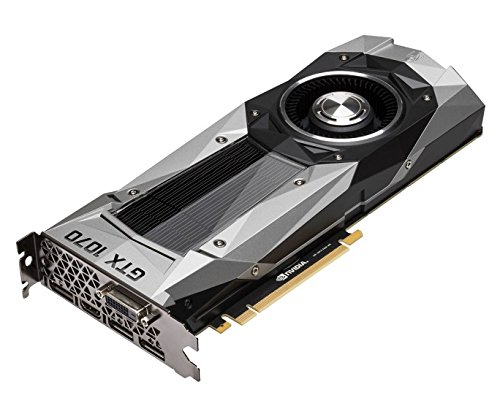
Increased Price: ~$775
Regular Price: ~$450
Power Draw: 225 W
Hashrate: 27.3 MH/s
VRAM: 8 GB GDDR5
Pros: Plenty of VRAM, great potential for tweaking, and reasonable power consumption
Cons: It can get quite overpriced, especially when in high demand.
If you can find this card at a decent price, it’s a very good performer. By boosting the stock speed via an overclocking utility (such as Afterburner), your hashrate may increase from 10% to over 31 MH/s.
Here’s the only real drawback to this card: It’s an all-round excellent performer, so that mining demand has driven its price from the regular $400 range to over $700! If you’re able to find it at a lower price, don’t hesitate to snap it up.
GeForce GTX 1080 Ti
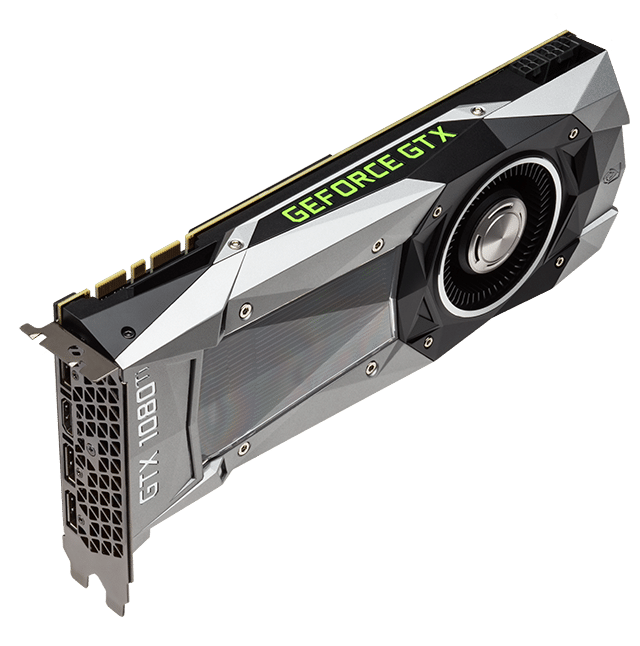
Increased Price: ~$920
Regular Price: ~$800
Power Draw: 330 W
Hashrate: 31.2 MH/s
VRAM: 11 GB GDDR5X
Pros: High amount of VRAM and an excellent hash rate.
Cons: Comparatively expensive, high-power consumption for its hashrate
With a little tweaking, the GTX 1080 can be increased to 32+ MH/s. While this hashrate is great for Ethereum, the card is even better at mining Zcash.
This card has a great deal of fast VRAM, so it will ensure that it’ll be able to mine Ethereum for years to come. However, by the time the DAG increases over 10 (or even 5 or 6) GB, it’s very likely that far more efficient miners will be available. The card’s high upfront costs and considerable power draw mean that it will take some time to reach profitability.
This card generally retails in the $800 range, but mining demand has driven its price to over $1,000 in some locations. If you’re lucky enough to get free power, then this card could be a great choice.
Note that the standard (non-Ti) GeForce GTX 1080 has 8 GB of VRAM, and that it has a comparatively weak hashrate of 22 MH/s.
GeForce Titan Xp
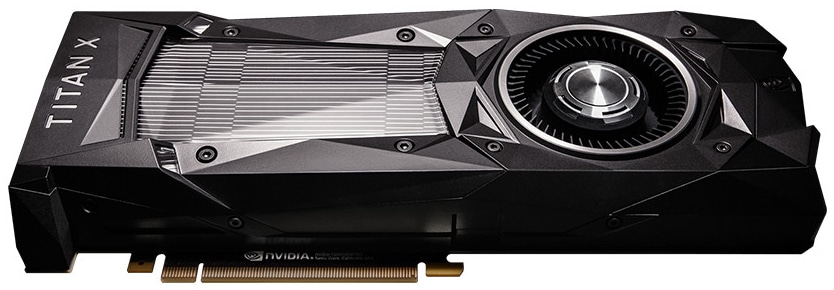
Increased Price: ~$1,430
Regular Price: ~$1,200
Power Draw: 200 W
Hashrate: 35 MH/s
VRAM: 12 GB GDDRX5
Pros: High amount of VRAM, and great hash rate for low power consumption
Cons: Comparatively, it’s very expensive
The Titan Xp can be overclocked to 42 MH/s, but it will consume 300 W when pushed that hard. It achieves an excellent hash rate without too much expenditure of power. Meanwhile, its top-end AMD rival, the RX Vega 64, achieves a very similar performance for about half the price.
Currently, only the Star Wars Collector’s Edition model appears to be available from Nvidia. While these Jedi Order cards certainly look great, cosmetic features add nothing to the mining performance.
Titan V

Price: ~$3,000 (from Nvidia only)
Power Draw: 215 W
Hashrate: 70 MH/s
VRAM: 12 GB HBM2
Pros: It has unmatched hashing power, and it’s supremely power-efficient.
Cons: It’s massively expensive!
Nvidia’s latest flagship card, the Titan V, is a real beast. It uses a new type of graphics processor named Volta, which is also found in Tesla accelerators. The card is intended for serious number- crunching (such as machine learning, AI, and high-performance computing (HPC) applications).
The card also excels at mining, reaching 70 MH/s with stock settings. But it increases up to 82 MH/s when it’s pushed to its limits. In the raw hash power stakes, this card puts Nvidia far ahead in the raw hash-power stakes, and beats out AMD’s closest rival, the Radeon RX Vega 64. It only reaches about 45 MH/s and consumes more power.
However, the Titan V’s massive price tag both puts it out of reach for the average home miner, but it ensures that it’ll take a very long time to pay for itself. It’s likely that the lower-priced, stripped-down gaming versions of the Titan V will be unveiled in 2018. One of these cards may prove to be the ultimate bang-for-the-buck in Ethereum mining power.
AMD Cards
Below, we rank our favorite AMD cards for Ethereum mining according to the overall value for the money. Note that the mining performance of the Polaris architecture is common to AMD’s venerable RX range, and it is rapidly degrading with each new epoch.
For example, the RX 580’s hashrate has fallen from 23 MH/s (140 epochs) down to 18.5 MH/s (162 epochs). While the RX range is still great for mining other GPU coins, it’s quickly becoming obsolete for Ethereum mining.
AMD Radeon RX Vega 64 Liquid Cooled Edition

Increased Price: $1,300
Regular Price: $700
Power Draw: 210 W
Hashrate: 30 Mh/s
VRAM: 8 GB HBM2
Pros: Excellent mining performance for the price, and extreme overclocking potential
Cons: It runs hot, which requires an external cooling solution. It’s very scarce, and it’s hard to find at a fair price.
The Vega represents the latest in AMD GPU architecture. While the standard air-cooled Vega series runs a little too hot for serious overclocking, this special edition stays cool enough to reach 42 MH/s, while drawing just under 300 Watts! This feature represents an amazing value: It can match the overclocked performance of Nvidia’s Titan Xp, but only costs half the price.
Unfortunately (and probably for the above reason), the Liquid Cooled Vega 64 is very scarce. If you can find one close to its recommended price, you should purchase it without hesitation.
Note that Vega cards require the latest, mining-optimized drivers in order to perform properly.
R9 390(X)
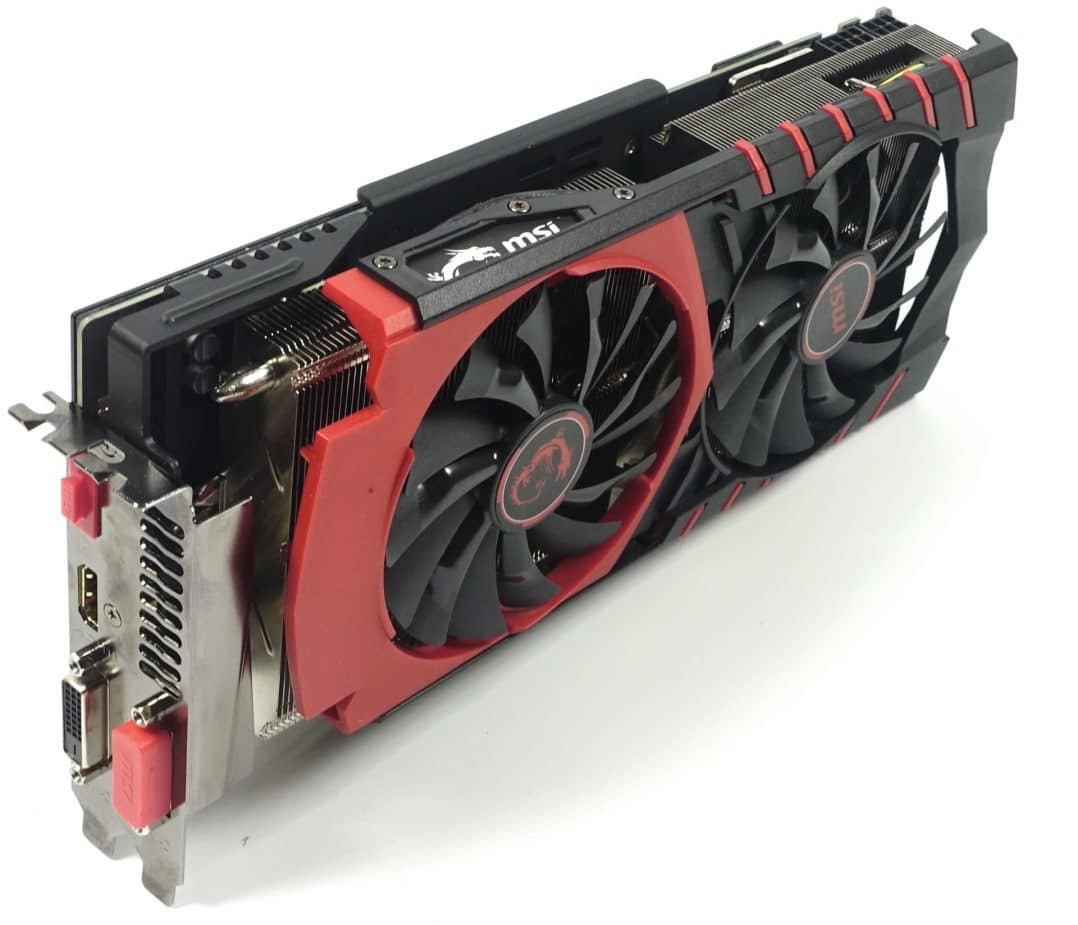
Increased Price: ~$540
Regular Price: ~$320
Power Draw: 235 W
Hashrate: 30 Mh/s
VRAM: 8GB GDDRX5
Pros: For an older card, it has a very impressive performance, and depending on its availability, it has a great price.
Cons: Scarcity has driven the price very high, so older tech has a lower resale value.
In terms of Ethereum mining performance, the R9 series has aged far more gracefully (even though it was introduced in 2015) than the more recent RX 400 / 500 series (which launched in 2016 and 2017, respectively).
The mining demand has driven prices well above their normal retail price. That said, the card achieves a hashrate similar to the GTX 1079 Ti and 1080 models. And it’s a fraction of the price and lower power consumption, at least compared to the 1080. However, you must keep in mind that this older technology will have a lower resale value than these Nvidia models (once it’s no longer suitable for mining).
Since R9s only have 4 GBs of RAM, you should avoid them, as their performance is rapidly degrading with advancement of epochs.
AMD Radeon RX 580 (and entire RX 400 & 500 series)
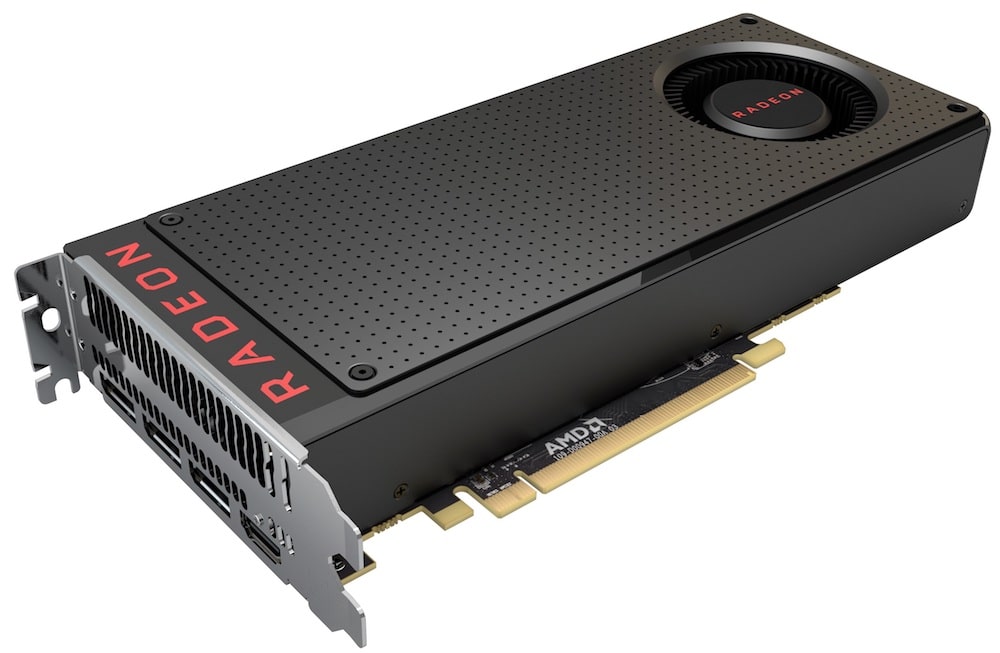
Increased Price: $550+
Regular Price: ~$340
Power Draw: 185 W
Hashrate: 18.5 Mh/s (and falling fast)
VRAM: 8 GB GDDR5
Pros: Features great cooling and an excellent performance for the price
Cons: Polaris architecture is increasingly poor for ETH mining, and it’s overpriced, due to frequent scarcity.
Long considered the workhorse of GPU mining, the time has sadly arrived when the RX 400 and 500 series must be put out to pasture—at least for Ethereum mining purposes. Unless you intend to mine other altcoins and can find an RX 580/570/480/470 at a good price, you should shun the rip-off prices that sellers often charge for these cards.
A flood of RX cards may hit the market when they’re no longer usable for Ethereum mining. It may then be possible to pick up some bargains, in order to mine other GPU coins.
Conclusion
AMD cards are likely the best choice for the budget-conscious. However, the top-end Nvidia cards outperform them in terms of power efficiency. Carefully weigh your options, and keep in mind your budget and power costs.
Whichever card you decide on, be prepared to spend a lot of shopping time at the various retailers and resellers. Only then can you hope to find that coin at a “fair” price. Mining has really inflated GPU prices across the board, which is a good indicator that GPU mining is still profitable—if you play your cards right.
Read More Best Ethereum Mining Hardware (2018 Updated) : http://ift.tt/2mWDHxxBagikan Berita Ini














0 Response to "Best Ethereum Mining Hardware (2018 Updated)"
Post a Comment